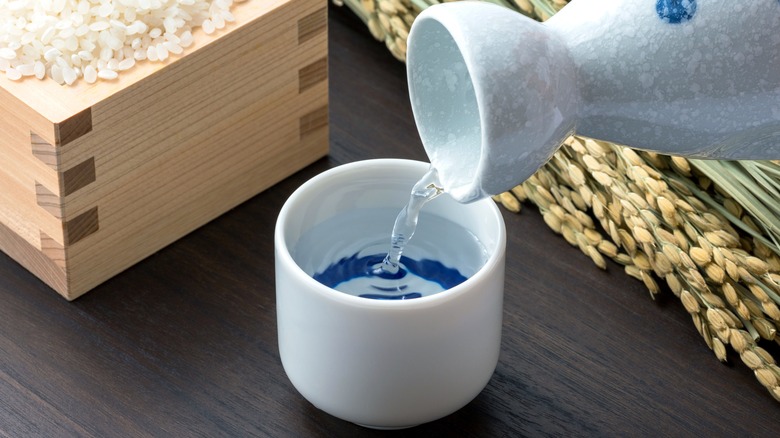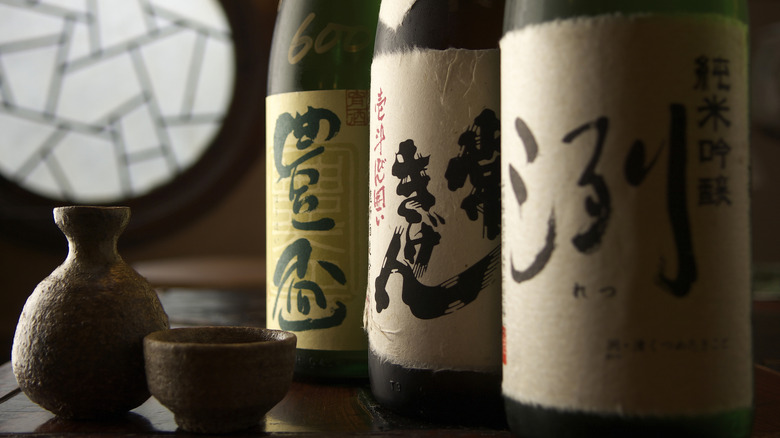How Long You Can Store A Bottle Of Sake After It's Been Opened
Sake is among the most widely imbibed alcoholic beverages in Japan, and it has its adherents here in the U.S., too, as this country is actually the biggest exporter of the alcoholic fermented rice drink. While you most commonly find it served in Japanese restaurants, it is also available at many liquor stores. So if you bring home a bottle, to enjoy with your store-bought sushi, you might be wondering how long you have to drink it once it's been opened.
Unlike wine, which only lasts three to five days after opening, an opened bottle of sake has a shelf-life of about a week, thanks to its much slower oxidation process. (An unopened bottle of sake, on the other hand, should maintain its quality for up to a year, or two years if kept in the fridge.) That said, it is at its best quality within three days of opening, so while you can drink it on days four through seven, it likely won't taste quite as good.
Most sake which is kept on store shelves has been pasteurized twice, so it need only be refrigerated once opened (and even then, it's not entirely necessary). However, there are types of unpasteurized or only partially pasteurized sake which need to be refrigerated both before and after opening, called nama, namachozo, and namazume.
How to tell if your sake has gone bad
Even if you kept your opened bottle of sake in the fridge after using it to make Japanese karaage or a copycat Nobu miso black cod, external factors — like it being exposed to bacteria — can cause it to go bad before your week is up, leading to a highly unpleasant surprise the next time you go to pour. For example, the first indication that your sake has gone bad is the smell, which can turn to a rotten, vinegary odor or one that reeks of chemicals. If it smells bad, it likely tastes bad, too, and while we don't recommend sipping on sake that you suspect has turned, if you go for it anyway, it will likely taste sour and spoiled.
There is also how the sake appears, with fresh sake looking clear for the most part, but bad sake turning yellowish or even brownish. Fresh sake is also free of debris floating in it, so if you pour your sake into a glass and see what looks like particles, grounds, or other dross within, it could be a sign that you should pour it down the drain.

